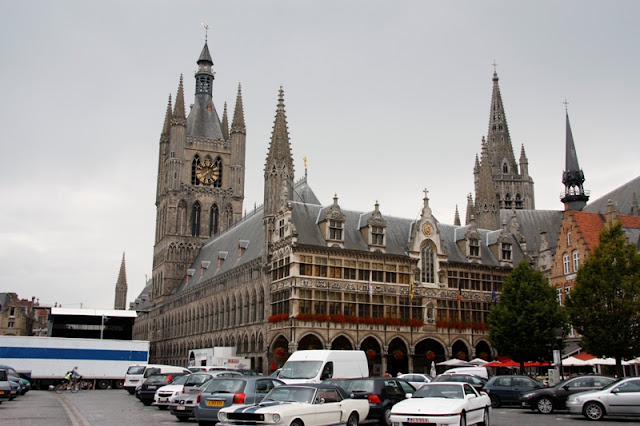After a few days in Ribe in Denmark it was time to head off down the tracks again on 11 August. This time it was on some secondary lines firstly to Tønder in Denmark where we changed to a cute little railcar type train and crossed into Germany to change into an express at Niübell. Another change at Elmshorn to connect with a train to Bremen at Hamburg Hbf (Hauptbahnhof). After five trains we stopped at Bremen for the night.
Travelling in Europe is a breeze.We get a Eurail Pass which works out really great. Zipping along at 300km/hr one can cover large distances in a short space of time. Another advantage is that there are lots of hotels close to the station which is usually near the middle of the city. Forget about getting around Europe by air. No check in or security checks, arrive at the correct platform at least five minutes before the train is due, but you do have to get your luggage onto the train and up into the racks although there are convenient storage spaces in the ICE trains. If you miss that one, there is another in an hour's time.
 |
| A curious bronze statue in Bremen which everyone seemed to line up and have their photograph taken with. Not me though. |
Bremen was another German city, extensively bombed in WW2 which has been extensively rebuilt. The centres of a large number of cities were rebuilt to their pre-war style but one can see often where this has occurred in a number of cases.
Dominating Würzburg is the fortress which was originally built in 704AD.
What's inside? A small building in the courtyard.
It's a well of course. How else would you get water if you were stuck in your fortress besieged by invading armies?
So now you know.
 |
| Wurzburg 1945. this model is in the museum at Festung Marienburg |
Surrounding Würzburg on the hills are grape vines. This part of Germany is famous for its rather sweet Franconian style wines. We found this plaque on a house when we were heading off to find another important part of world history.
For those of us bought up on Cold Duck and Montana Pearl in New Zealand in the 1970s will remember the thrill of graduating to Müller-Thurgau. Well this is where the varietal originated. And then came Savignon blanc.
Not only is Würzburg famous for its wine but is also where 17 Noble Prize winners (in Physics, Chemistry and Medicine) went to university and where we came to find where x-rays were discovered in 1895 by Wilhelm Conrad Röentgen. He was the first recipient of the Nobel Prize for Physics in 1901.
There are lots of displays tubes, x-ray machine and a copy of the first every x-ray taken and the original Crookes Radiometer! The original x-ray is locked up for safe keeping.
For some one who is keen on the history of scientific discoveries, this museum, in the building still used by the university has to rank alongside Rutherford's Den in Christchurch.
Having had a good dose up on x-rays the river Main offered a slow cruise down to Veitschöchheim. The main attraction here being the Schloss and its baroque gardens.
 |
| Schloss at Veitschöchheim |
 |
| The main water feature at Veitschöchheim |
A good day trip on another day was had down to Regensberg with a stop at Nürnberg (Nuremburg) on the way back.
 |
| Regensberg |
 |
| Central Nürnberg (Nuremburg) |
 |
| Watch tower, Kaiserburg Imperial Castle, Nuremburg |
After three busy days around southern Germany it was time to head north towards Copenhagen to fly back to Abu Dhabi. However it is too far to do comfortably in one day in the ICE trains so a stopover in Hannover for a couple of nights was on our itinerary. A few surprises were in store here for us. Will leave you guess one which really set us back on our heels.
 |
| The new Rathaus in Hannover, built 1908 and extensively restored after 1945. |
 |
| Local wildlife in front of Rathaus, Hannover. |
The view from the top of the dome in the Rathaus (Town Hall) include the remains of a bombed church left as a memorial. It is remarkable that the bell tower survived and now has a modern glockenspiel.
I hope you have enjoyed tripping around Europe with us and would love your comments at the bottom of each blog.
 |
| Bombed church in Hannover (Hanover) |
 |
| Central Hannover |
In Hannover you can walk the Red Line around the old city. It takes you through the above area, to the Rathaus and bombed church before heading back towards the centre of the city. At one point something caught my eye in the cobbles in the footpath. I froze as I realised what it was all about.
On closer inspection this is one of the plaques.
This needs no explanation, and on this sombre note I will conclude our accounts of Summer 2010.
I hope you have enjoyed tripping around Europe with us and would love your comments at the bottom of each blog.




























